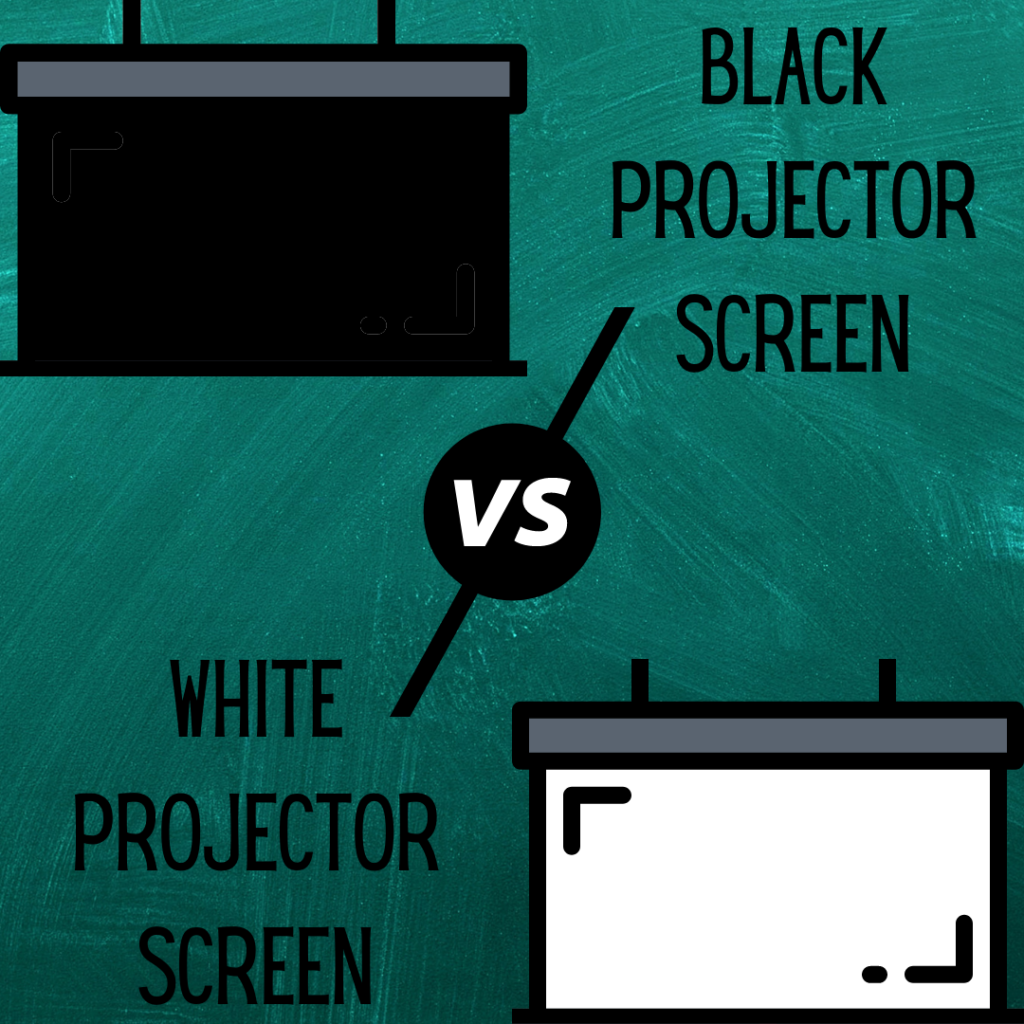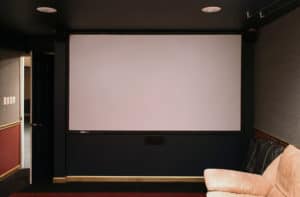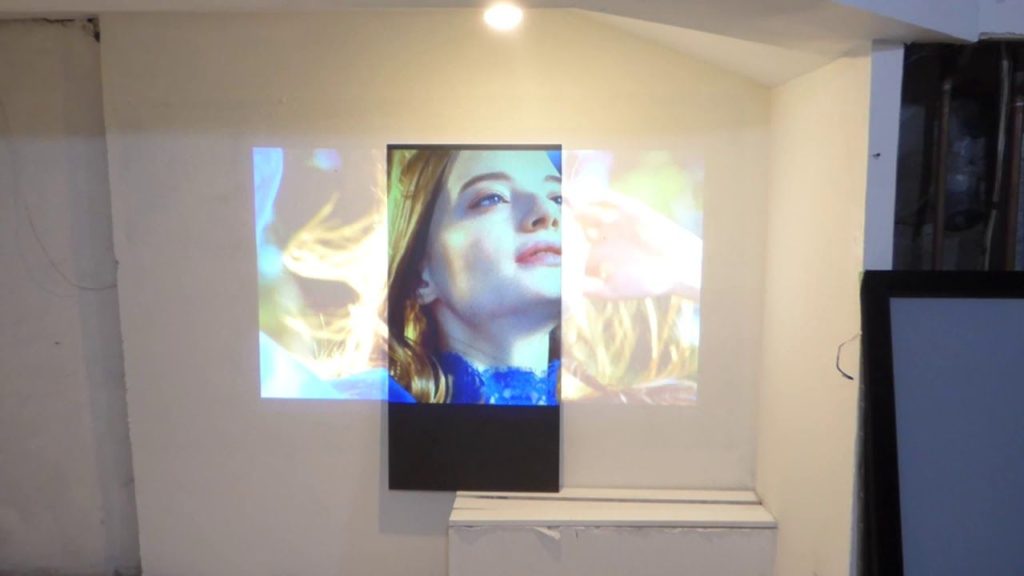There are many individual benefits of both black and white projector screens and we will be going over which situations may need a black versus a white projector screen.
There are a few circumstances that a black, or darker projector screen will be better, and the same goes for white screens.

These mostly depend on your individual setup, what you enjoy watching on your projector, and various other factors that we will go over to make sure you have the optimal experience watching on your projector!
Black Projector Screen
There aren’t many differences between a black and white screen in terms of quality or anything, but the most obvious, and noticeable difference is the color difference where the black will be much darker than the white projector screen.
The darkness of the black projector screen offers a few benefits that you will not be able to find in a regular white or off-white projector screen.
The reflectivity of black projector screens is one of the major differences, and since black projector screens don’t reflect as much light as a white screen they are a better fit for a bright outdoor setting, or room with more ambient lighting.
If there is a lot of ambient lighting in a room then a black screen will be less reflective and you will be able to see your projection more easily.
Black projector screens also offer the bonus of being much darker than white screens, which accentuates the contrast ratio of a projector. This is due to the screen being darker so the whites show up much brighter than when projecting whites onto an already white projector. The same can’t be said for the blacks of an image though. Since the screen is black the blacks will not be as noticeably darker but instead, the projector won’t have as much of a black color range due to the color of the screen.
Black screens generally pick up contrast much better than any other color screen even a dark grey this is due to the other color screens not having the ability to actually pick up the contrast as the colors are too light.
White Projector Screen
White projector screens are the most commonly available out on the market now and since they are massed produced they are much cheaper than their black counterparts.
There isn’t really anything special about white projector screens, but if you are in a small space projecting and just want to set up a mini projector setup you can easily use a white wall as your screen instead of having to buy a projector screen.
projector screen.
This will save you some money, but also it is nice and convenient as you don’t have the struggle and hassle of setting up a screen every time you take your projector somewhere different, just find a white wall, plug in your projector, find a movie, and start watching! Easy as that no extra steps.
The problem with white screens is they don’t offer as wide of a variety in colors and contrast. Since the screen is white it often washes out the color and makes it difficult to read text on the screen or just in general view what you are projecting.
Also, white screens are not very optimal for rooms with a lot of ambient lighting as the other light in the room along with the white screen makes watching anything on your projector difficult especially if your movie has a lot of white in it you don’t get that same depth as you get with a black projector screen which just makes the whole experience with your projector, not the best.
This is unfortunate as I said white projector screens are much easier to come across and cheaper, but using a white screen in a daylight projector setting won’t work very well.
Grey Projector Screens
You may think that a grey projector screen will give you the best of best of both worlds in regards to white and black projector screens. Well, grey projector screens can process contrast better, more similar to a black projector screen but oftentimes if the grey doesn’t have the right color it doesn’t even process the contrast correctly.
This leaves the pictures without depth and washed out just like a white screen.
If the room you are projecting in does have a lot of ambient lighting then a grey screen will probably work a bit better than a traditional white screen, but in most cases, a grey screen can’t compare very well with a black screen just because black has more of a true nature and allows for more depth and contrast, unlike a grey screen.
In most cases, I would say that you should just stick with a white screen instead of switching to a grey screen as they are often more expensive and marketed as better for contrast when they aren’t really. You will be able to save some money going with a white projector screen vs a grey projector screen and you will get the same results basically.
Unless you really are bothered and want the best experience then instead of going halfway just go all the way to a blacks screen that will be able to give you the best experience.
Frequently Asked Questions

Thomas is a leading contributor and loves anything to do with tech! After attending college for Computer Programming, he continued his interest in the digital world and then went on to start a now 10-year-old retail tech/gadget shop. When he isn’t working in his technology shop he is reviewing and learning more in-depth through his youtube channel.

